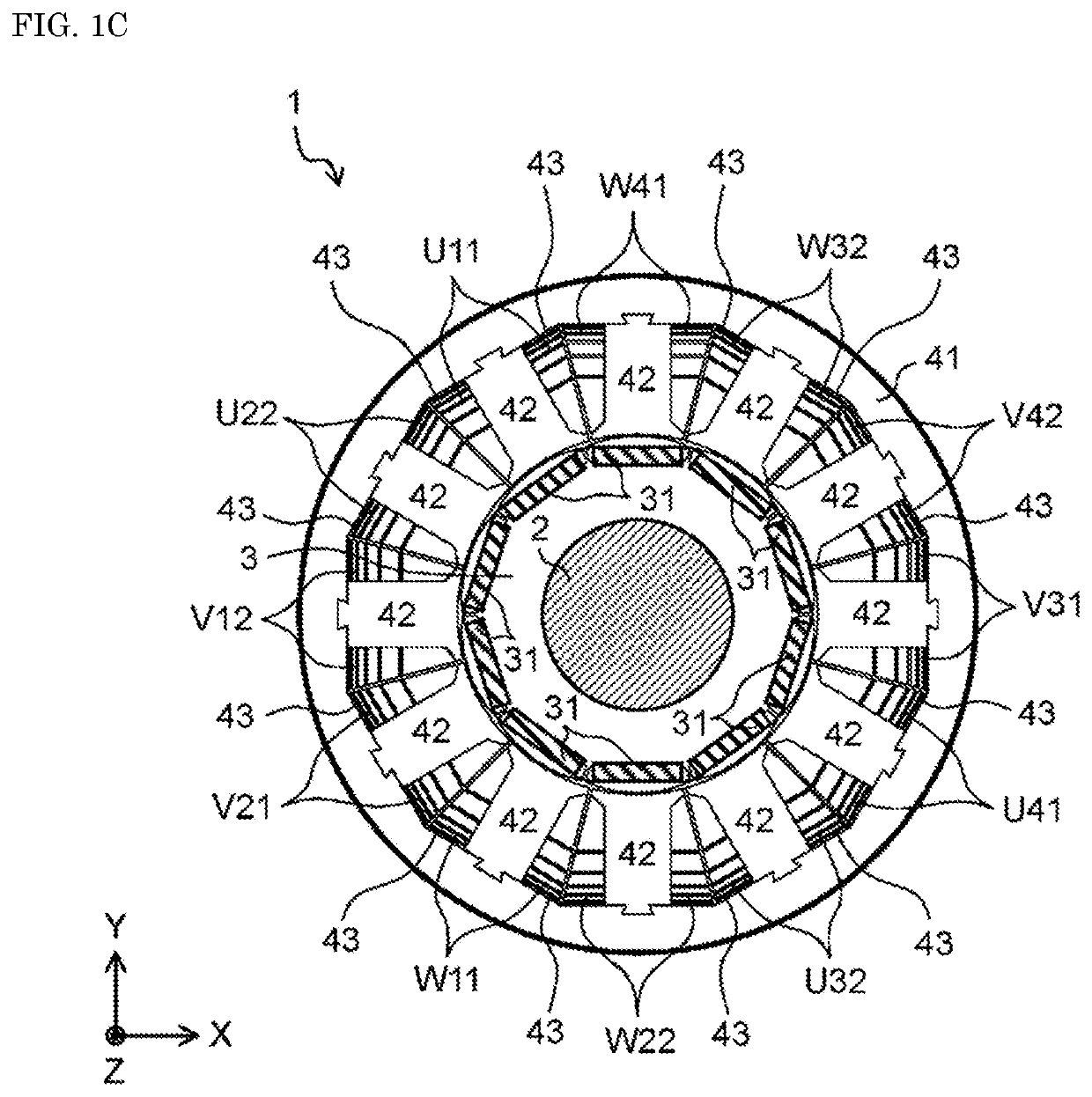Motor
a technology of coils and motors, applied in the direction of dynamo-electric machines, magnetic circuit rotating parts, magnetic circuit shapes/forms/construction, etc., can solve the problems of uneven heat distribution in the coils, heat is a factor of lowering the efficiency of the motor, etc., and achieve high-efficiency motors. the effect of increasing the heat radiation effect of the coils
- Summary
- Abstract
- Description
- Claims
- Application Information
AI Technical Summary
Benefits of technology
Problems solved by technology
Method used
Image
Examples
Embodiment Construction
lass="d_n">[0018]An exemplary embodiment will be described herein in detail with reference to the accompanying drawings. The preferable exemplary embodiment described below is a substantially mere example, and does not intend to limit the present invention, applications, and purposes.
Exemplary Embodiment
Motor Structure
[0019]FIG. 1A is a top view illustrating motor 1 according to an exemplary embodiment. FIG. 1B is a side view illustrating motor 1 according to the exemplary embodiment. FIG. 1C is a cross-sectional view taken along line 1C-1C in FIG. 1B. However, the views do not illustrate a cover case, for example. In FIG. 1C, only a main part is illustrated as a hatched cross section. Inside of the cover case (not illustrated), motor 1 includes shaft 2, rotor 3, stator 4, coils U11 to U41, V12 to V42, and W11 to W41, and bus bars 51 to 54.
[0020]In here, a longer direction (a direction vertical to a paper plane of FIG. 1A) of shaft 2 is referred to as a Z-axis direction. Directions ...
PUM
 Login to View More
Login to View More Abstract
Description
Claims
Application Information
 Login to View More
Login to View More - R&D
- Intellectual Property
- Life Sciences
- Materials
- Tech Scout
- Unparalleled Data Quality
- Higher Quality Content
- 60% Fewer Hallucinations
Browse by: Latest US Patents, China's latest patents, Technical Efficacy Thesaurus, Application Domain, Technology Topic, Popular Technical Reports.
© 2025 PatSnap. All rights reserved.Legal|Privacy policy|Modern Slavery Act Transparency Statement|Sitemap|About US| Contact US: help@patsnap.com



